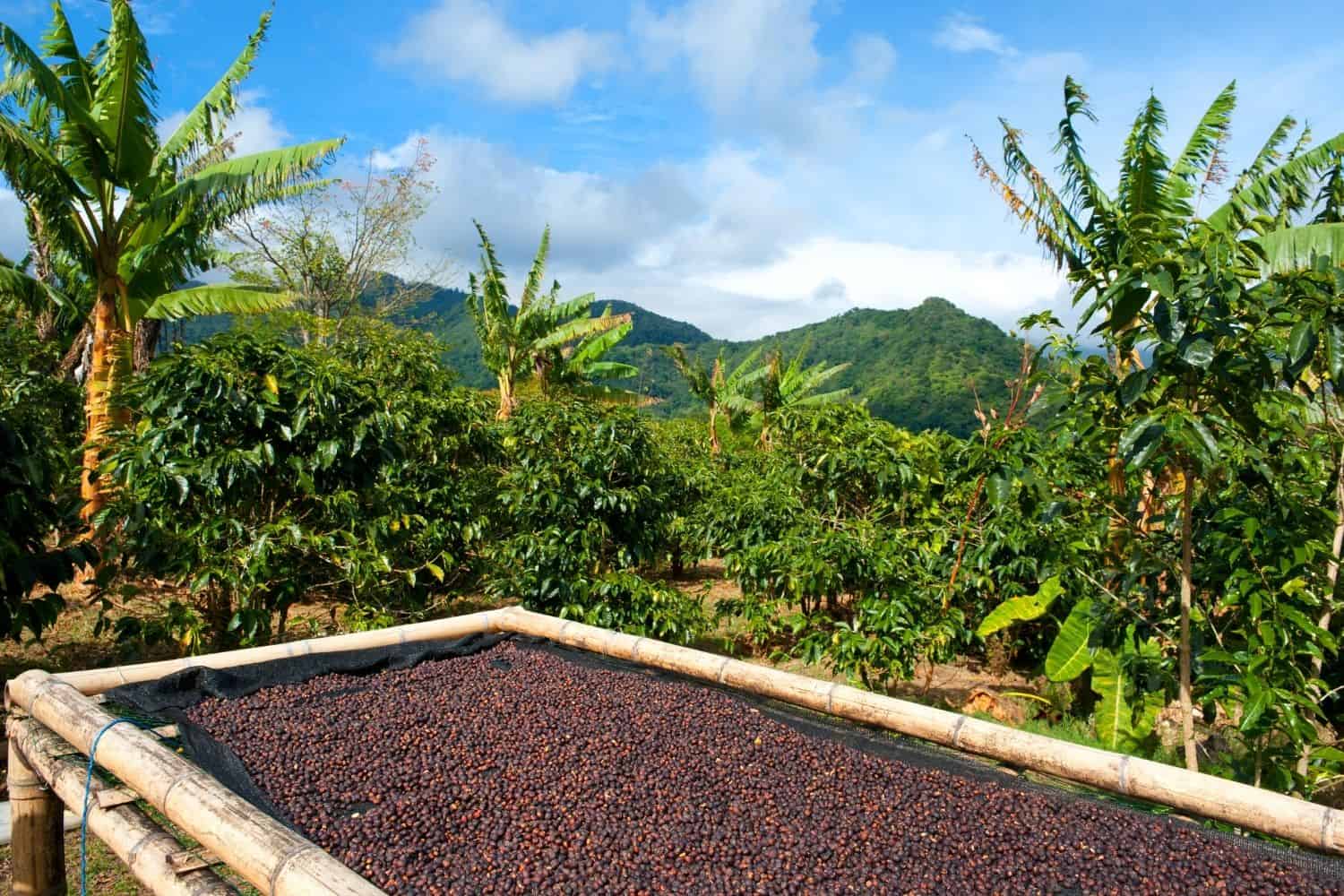Central America is often referred to as the bean belt. Success in coffee production for the region began in the 18th century. Coffee did thrive in Central America as countries enjoyed good returns from export.
Most countries experienced political and economical interference. Coffee production was affected. Those times have long gone and now farmers experience a mixture of boom and declined.

The Central American region consists of seven countries all who grow coffee. The climate and topography of this area are ideal for great coffee. Each of these countries produces one of the most sought-after grades of coffee.
Here are highlights of the countries in the region. We will focus on the variety of coffee produced. Their climate and topography. The challenges faced as well as their global and regional position.
Guatemala
Guatemala is the world’s 10th coffee-producing country globally. Coffee is the main cash crop and it dates back over 100 years. Coffee consists of an acidity flavor mixed with chocolate and a spicy taste. But this profile and intensity vary in different regions.
Most farmers in this country are poor. Farming of coffee is done on small scale with a few farmers producing on a large scale. Little efforts have been made to improve the country’s main type of coffee into a high-yielding one.
Some of the best coffee is produced from the region’s volcanic landscape. This is mainly attributed to reliable rainfall. Bourbon is the main coffee variety.
El Salvador
El Salvador is the smallest country in this region. Most of its production is done in the mountainous region of the country. This include Ahuachapan, Chalatenango and San Salvador.
The country’s economy relies heavily on its arabica coffee. For the longest time, coffee has helped the country fund its development projects. It was the major source of income for the country.
Things changed in the 19th century when the country experienced a civil war. Small-scale farmers as the major contributors to the production of coffee were affected. Changes in global prices also declined further denting the countries’ main cash crop.
The country has since made progress and is on a path of recovery. The Heirloom Bourbon is the most popular variety followed by the Pacas and Pacamara.
Honduras
It the largest coffee producer in the region and the 6th in the world. The country boost of one the best Arabica variety. The coffee has the perfect mixture of fragrance, acidity, and medium body.
Small farmers go through a lot to maintain the high quality and quantity of coffee produced. Some of the farms in Honduras are located in remote or mountainous regions. Farmers endure adverse weather conditions, diseases, and poor transport infrastructure. This also affects the quality of the coffee.
The common coffee variety is Bourbon which is of good quality. But, most Honduran coffee is mainly used in blends and is not well recognized.
Nicaragua
The third coffee producer in the region. Nicaragua has seen a mixed trend of coffee’s contribution to the economy. Since the 19th century, coffee has been a top export product for Nicaragua.
Coffee is grown in the hilly terrains which are in the northern region of the country. As mentioned by Silvio, a coffee producer, Nicaragua produces a variety of coffee depending on the region. But, some of the challenges including infrastructure and hurricanes are common.
Nicaraguan coffee is often a Bourbon variety. It has a citrus acidity with chocolate and a floral feel.
Costa Rica
Costa Rica sits between the Pacific ocean and the Caribean Sea. The average altitudes are between 1300-1700 meters above sea level. Coffee in Costa Rica is one of the countries top earners. Figures from 2019 show that it exported coffee worth $309 million which was 2.37% of its GDP.
Costa Rica grows its coffee within its central region. Tarrazu is one of the regions that produce exceptional coffee. Each region is unique and experiences diverse changes in climate.
The common variety of coffee grown is Caturra and Catuai. Others include Bourbon, Typica, and Villa Sarchi. The coffee is produced is a good round body, fruity and bright acidity with floral citrus flavor.
Costa Rica’s coffees have a good body, fruity and bright acidity with a clean and crisp taste.
Panama
Panama’s coffee history dates back to the 20th Century. However, the country has witnessed exponential growth in coffee over the last 20 years. This is largely attributed to the success of the Geisha variety.
Arabica is the predominant variety grown and is found in the mountainous areas of Panama. This is in Chiriqui and Boquete regions. Robusta grows in low altitude areas like Cocle, Panama Oeste, and Los Santos.
The Geisha variety has long bodies, bright acidity, floral scent with a citrus flavor. Other varieties include Caturra, Catuia, Typica, and Bourbon.
Belize
Belize is an immature coffee producer with a young agricultural export market. It has the lowest population in the region. Coffee is mostly grown organically in the rainforest.
Coffee production from this region is growing with a bright future. The coffee is usually full body and is usually handpicked.
The success of bean belt
The Central American region is home to the best coffee beans in the world. This can be attributed to various reasons some of which include:
- Excellent climate and altitude for coffee production.
- Access to various markets.
- Availability of cheap labor.
But, there have been challenges that farmers face while producing coffee. Farmers often face poor transportation infrastructure, rapid rains, and hurricanes.
Private and public organizations are making efforts to improve productivity in the region.
If you love coffee, then Central American coffees should be something you should try.